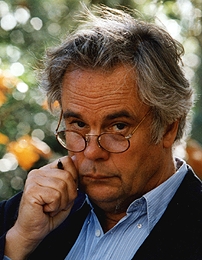Micro finance
movement
marks its momentum
at summit

By
Jonathan
Power
TFF Associate
since 1991
Comments directly
to JonatPower@aol.com
November 9th, 2006
LONDON - The first time I thought Muhammad Yunus,
founder of the Grameen bank, deserved the Nobel Prize was twenty years
ago, and I said as much in a column in the International Herald Tribune.
“Away from the intrigue of Dhaka, with its street battles, armed
police and brigades of international journalists something quite wonderful
is happening in Bangladesh.”
It was for me a road to Damascus. Saturated with covering failure in Africa,
Brazil and India there I saw for the first time how the poor could almost
literally lift themselves up by their own bootstraps. I recall sitting
in the shade of a mango tree, not far from the Himalayan foothills, talking
to my host, an ultra ebullient Italian, Sergio Apollonio, the information
chief of a small Rome-based UN agency, the International Fund for Agricultural
Development (IFAD), who had had to twist my arm to persuade me to take
the time to make this trip. Rice paddies stretched into the distance in
many tones of green. It was early, but villagers, stooping into the floodwaters,
were working hard, weeding, sowing, and fishing. “Bangladesh was
not the poorest country in Asia for want of hard work,” I wrote.
Twenty years later Bangladesh is still convulsed by political turmoil.
But thanks to the inspiration of Yunus and his local imitators poverty
is falling faster than anywhere else in south Asia. Hard work now means
no longer treading water in an overpopulated land that constantly floods,
it means uplift and progress and for the country as a whole a steady growth
rate of 5-6%. No wonder many influential voices in Dhaka are asking Yunus
to break the political deadlock and run for president.
Meanwhile, the micro credit movement has spread its tentacles all over
the Third World, and even into poor communities in North America and Europe.
So huge and sophisticated has it become that it now taps capital from
Wall Street and other leading financial markets. This week I sat down
in Rome with an old friend, Farhana Haque-Rahman, and reviewed with her
how that first small loan from IFAD enabled Yunus to get his new idea
moving and where it is now heading. “When the world micro credit
movement holds its summit on Sunday in Halifax, Canada, you will see how
the idea has spread like a benign contagion. All the big players will
be there- the World Bank, the International Monetary Fund, all the aid
agencies. Our loans were peanuts compared with what is being invested
these days. Even hardened bankers have become convinced that a well-run
micro finance institution can outperform mainstream, commercial banks
in portfolio quantity. The top performing ones in some countries are more
profitable than the local commercial banks.”
One secret of Yunus’s success was his caution. At the time I visited
he had just turned down a loan of $200 million offered by the World Bank.
He believed in natural growth. If the Grameen bank grew too fast its standards
would slip and it would collapse. Deep down Yunus had a conviction that
“those that believe the very poor are not bankable because they
don’t have collateral are totally wrong”. This, he told me,
was “like arguing that men couldn’t fly because they didn’t
have wings”.
In turbulent times micro finance has shown itself to be a more stable
business than commercial banking. During Asia’s 1997 massive banking
crisis Indonesia was the hardest hit of all. Commercial bank portfolios
deteriorated rapidly, but loan repayments of the micro lender, Bank Rakyat,
with its 26 million clients barely declined. It was the same during Bolivia’s
banking crisis of two years’ ago- although microfinace portfolios
did suffer they remained substantially healthier than the commercial banks.
The Grameen model is not without its severe critics. After bad floods
in 1998 dealt a nasty blow to the client base of Grameen, the Financial
Times lambasted it for living off “the uncertain charity of development
aid” and Raghuram Rajan, director of the IMF’s research department,
wrote recently, “if we want micro finance to become more than a
fad, a temporary cause for the glitterati, it has to follow the clear
and unsentimental path of adding value and making money”.
Yes, I’ve read the books, in particular IFAD’s cost-benefit
evaluations and know quite well that most of these Grameen bank type institutions
couldn’t last for long without a subsidy from an aid donor. The
interest rate they would then have to charge would be prohibitive.
So what? If aid works, and clearly with these institutions it is working,
pumping in every year into the poorest of the poor $7 billion worth of
credit and, as can be seen in Bangladesh, turning a whole country round,
why should we question it?
Copyright © 2006 By JONATHAN POWER
I can be reached by
phone +44 7785 351172 and e-mail: JonatPower@aol.com
Get
free articles &
updates
Follow this link to read about - and
order -
Jonathan Power's book written for the
40th
Anniversary of Amnesty International
"Like
Water on Stone - The Story of Amnesty
International"

Här kan du läsa om - och
köpa -
Jonathan Powers bok på svenska
"Som
Droppen Urholkar
Stenen"


Tell a friend about this article
Send to:
From:
Message and your name
 
|